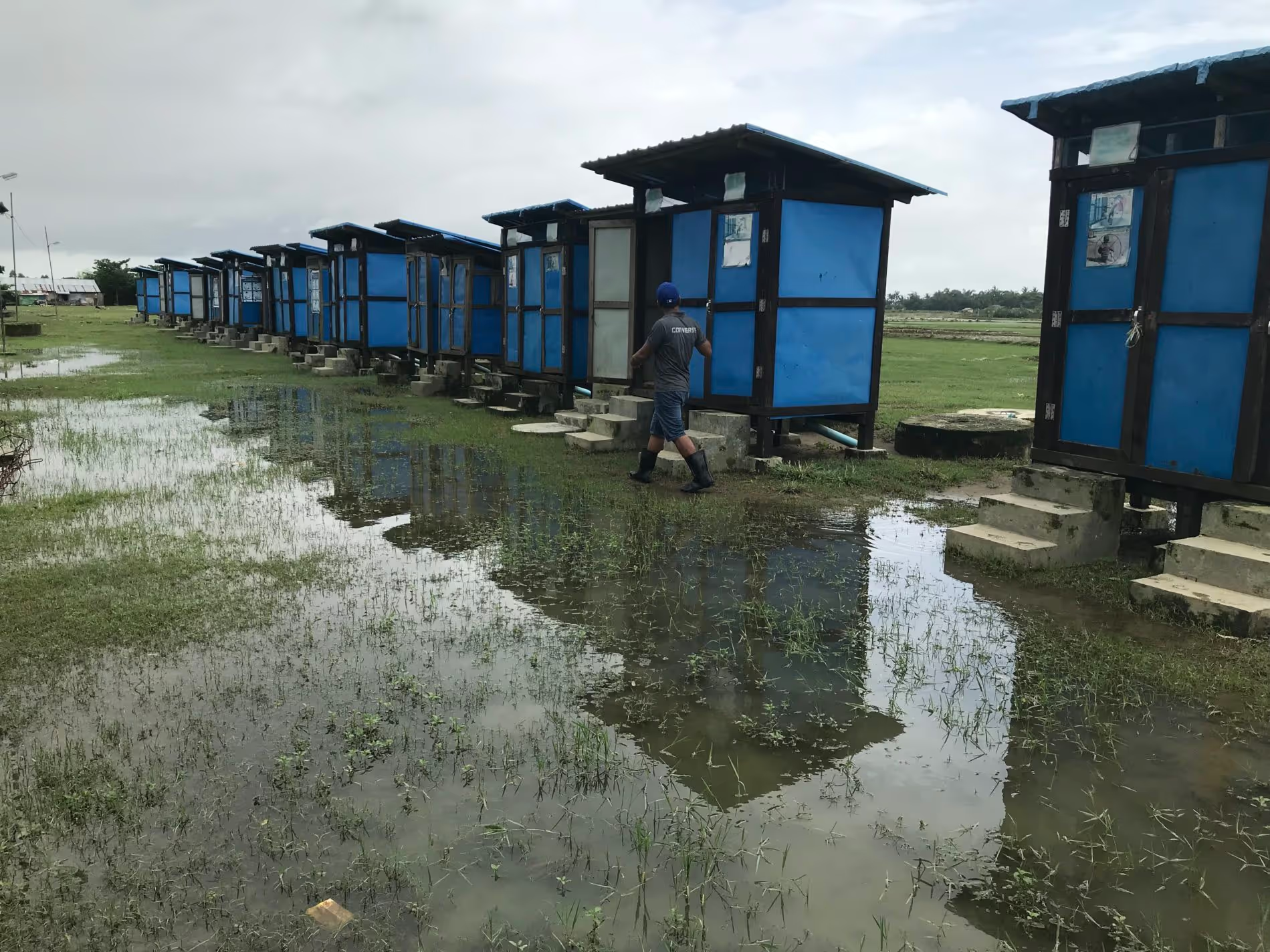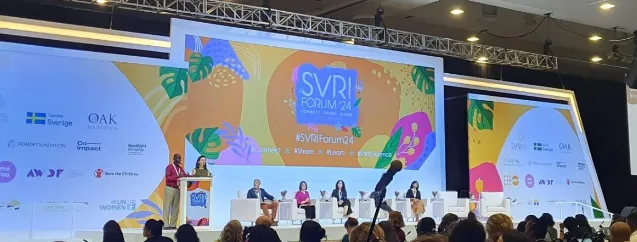Are Communal Tiger Worm Toilets a sustainable option for camps?

As increasing numbers of people are living in camp settings for longer, we need more sustainable alternatives to commonly used pit latrines.
Tiger Worm Toilets (TWTs) are a novel sanitary solution that contain composting worms to digest faeces inside the vault. This removes the need for expensive desludging, and sludge treatment infrastructure.
With the IHE Delft Institute for Water Education, we used a grant from the Humanitarian Innovation Fund (HIF) to develop a communal version of the household TWT, appropriate for use in humanitarian camps.
We tested the Communal Tiger Worm Toilet (CTWT) in the extreme environment of an internally displaced peoples (IDP) camp in Sittwe town, Rakhine State, Myanmar. We evaluated its sustainability under three pillars, and measured results against the regular sanitation systems used in the camp:
- Social. Do people use it and like it?
- Environmental. Does the waste get treated?
- Economic. How much does it cost to make and maintain?
The challenges we faced during the trial
Our first challenge was to gain permission to build the toilets in an area accommodating two displaced communities; Rohingya (Muslim) and Rakhine (Buddhist). To comply with government regulations, we built 45 household TWT’s in Rakhine relocation villages, as well as 34 CTWTs in the Rohingya camp setting as planned.
Then, in May 2017, Cyclone Mora hit. The 10 CTWTs that had already been built withstood the cyclone. We think this was due to dedicated attention to quality control on these special toilets. The other toilets in the camp were severely damaged. As well as this, in August 2017, political tensions started to grow, limiting our access to the camp for building and monitoring. Thankfully this eased by December 2017 and normal activity could resume.
We monitored our CTWTs for over 14 months, meaning that they survived monsoon seasons. They were used by over 700 people, so this was a large study. Here are our findings:
Were they socially sustainable?
YES!
The CTWTs were used continuously by both men and women. Both user acceptance and satisfaction levels were extremely high. Satisfaction was linked to the lack of smell, compared to the users’ original latrines. 99% of households opted to continue using the CTWT after the trial ended.
Were they environmentally sustainable?
KIND OF!
CTWTs convert human poo into worm poo, which occupies less space. So, while this still needed to be disposed of in the same way as pit latrine waste, there was a smaller volume. And this meant that they didn't need to be emptied as frequently. Furthermore, less desludging means reduced use of diesel and petrol-powered tractors and pumps. The aerobic process of the CTWTs also produces less methane than traditional toilets.
Were they financially sustainable?
YES!
We found that the CTWTs cost 47% less than traditional pit latrines over a five-year period. This broke down as a 34% reduction in construction costs, and a 90% decrease in maintenance costs. All are valuable savings for costly protracted camp situations.
What next?
CTWTs have proved to be sustainable within this specific context. We are now asking the humanitarian sector to consider the CTWT as an option when either retro-fitting existing communal toilets or building new ones. To help practitioners decide if this is an appropriate technology for their situation, we have developed a simple decision tree.
We have compiled the learning from this project in an easy-to-read manual, which is free to download. It includes the decision tree alongside all our designs.
Our next step is to develop a more general guidance manual for both the CTWT and TWT for the humanitarian sector, so watch this space. We also plan to share our findings in a journal article, to be published in the summer.
The CTWT Team are: Andy Bastable, Jenny Lamb, and Lucy Polson in the UK; Sophie Ford, the Logistics Department, the MEAL Team, and Benedict Wood in Yangon; Bagus Setyawan, Mee Mee Htun, Pier Francesco Donati, Bo Bo Tun, Oo Shwe Than, the Logistics Team, the MEAL Team, and Sonya Milonova in Sittwe; and Researcher, Claire Furlong (WEDC, UK &; IHE Delft, Netherlands).

Stay updated
Sign up for our newsletter to receive regular updates on resources, news, and insights like this. Don’t miss out on important information that can help you stay informed and engaged.
Related articles



Explore Elrha
Learn more about our mission, the organisations we support, and the resources we provide to drive research and innovation in humanitarian response.